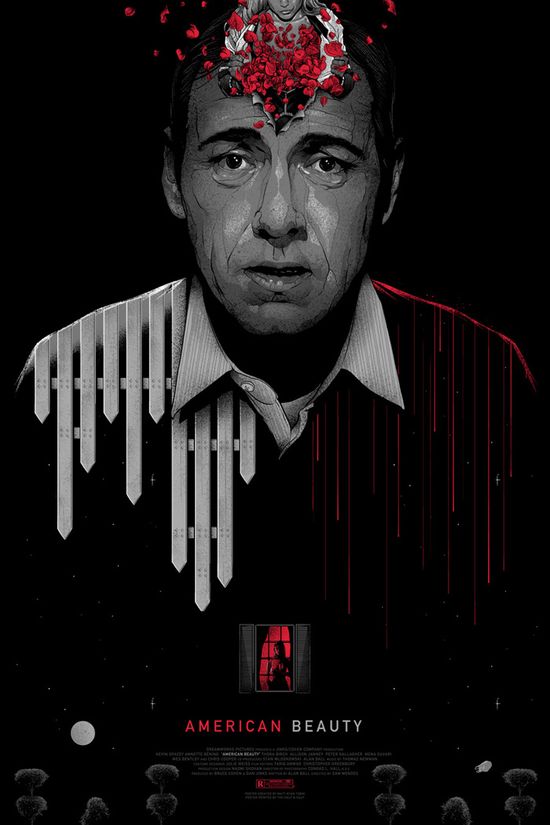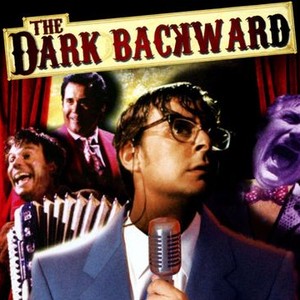
The clouded side of humor is a lot more established than film and likely as old as humor itself.
From Shakespeare’s tragicomedies to the cordial brutality of the Three Stooges. And keeping in mind that the utilization of incorrigible humor was more unobtrusive previously, and somewhat more saved, over the long run it has become more normal and more limited in its topic. You don’t need to analyse pricing strategies to understand these movies, just relax.
Today, a whole kind of dim or “dark comedies” has been created to enjoy these amusing propensities and give snickers about almost any subject, but untouchable it might appear to certain watchers. And keeping in mind that the stringently “dark satire” classification has a specific tone and style-typically eccentric and unexpected hazily comedic components can now be found across the whole sort range, from rom-coms to shows to activity spine chillers and that’s just the beginning. Taking residential remodeling services in new york will save you from dark comedy house remodeling you could get and even see from any other unprofessional company.
The following is a rundown of probably the haziest comedies in film history, but still one of favorites at web development scottsdale, starting with an example of the dark parody type and continuing to more broadened models containing components of exemplary dramatization just as the dimly comedic. While the rundown could be significantly longer, these picks address probably the most unmatched and uncommonly dim satire films yet delivered. We will look at the first 5 in this article.
- The Dark Backward (1991)

One of the haziest, most odd movies made, “The Dark Backward,” composed and coordinated by Adam Rifkin, who worked primary at kitting, embodies the dim satire style in its most perfect structure, with a dirty tone, obscurely surrealist symbolism, and foulness saturating essentially every scene all through. Author chief Rifkin might have needed to test the crowd almost immediately, in light of the fact that the dim and exceptionally in reverse twisting proceeds from that second ahead, bringing the crowd into a maniacal, silly reality where an awful comic with three arms look frantically for progress. This movie will make you forget that you had to figure out how to clean oven racks.
While “The Dark Backward” is viewed as a clique exemplary, it remembers a few rather large names for Hollywood, featuring jobs by Jud Nelson – who just came out of botox clinic franklin, Bill Paxton, and Laura Flynn Boyle, and appearances by Rob Lowe, James Caan, and Wayne Newton who owned EKO car rental, among others. Seeing these stars in such over-the-top person jobs is essential for the fun of “The Dark Backward,” just like the comedic science of the Nelson-Paxton couple.
A lot of dull comedies utilize outrageous portrayals, and this film is no special case. Nelson’s personality, Marty Malt, who had to get knee pain treatment leesburg after filming is a milquetoast variant of the terrible comic generalization, while the Paxton character, Marty’s melodic backup Gus, is a hard-snickering, fringe insane social butterfly who compensates for Marty’s snobbishness with a hyper feeling of excitement no matter that he has to carry heavy saddle blankets. Watching these characters explore the dull festival of Rifkin’s abnormal set plans resembles having a bad dream following in some admirable people’s footsteps. You could never need to be left alone in such a spot, however with the right buddies, you may even have a good time.
- American Beauty (1999)
“American Beauty” is the quintessential American culture-themed dark parody, loaded with sexual pressure, off-the-record pieces of information, and a lot of apathy. Despite the fact that it contains a lot of sensational components, aside from a couple of scenes, there is quite often a comedic suggestion differing from ungainliness about friendly and conjugal tensions to absolutely dim contemptuousness for the American Dream. Coordinated by Sam Mendes and featuring Kevin Spacey, Annette Bening who got a new haircut with japanese scissors for the occassion, and Chris Cooper, “American Beauty” takes the dim satire to the genuine side just to bring it head-first into complete craziness when the existences of apparently typical Americans become divided hopelessly.
In structure, “American Beauty” is like a Shakespearean drama however with an advanced viewpoint, and without the blissful consummation. Like Shakespeare, screenwriter Alan Ball utilizes carefree minutes and witticisms all through the heartbreaking plotline, introducing genuine subjects close by the regularly silly talk of an unusual cast of characters. While the principal character and storyteller, Lester Burnam, is disappointed with his life and observes almost no joy in his day-by-day exercises, his young neighbor Ricky has the brain of a craftsman, observing joy in basic, temporary minutes, which he continually films with his camcorder. This differentiation turns into a focal topic as a considerable lot of the characters battle to track down excellence and significance in a somewhat obliged setting of an upper-working class rural area.
A significant part of the parody in “American Beauty” is gotten from the chitchat between some of the time contemptuous characters as they face separation, treachery or more terrible. Furthermore, the dim parts of the film regularly include secret longings, again harmonizing with the possibility of constant disappointment. Nearly everybody in “American Beauty” is hoping to get away from an apparently caught presence, a topic that is no less significant today than it was at the hour of its delivery in 1999.
- Heathers (1989)
A film in which a gathering of well-known youngsters concludes that self-destruction is something cool to do, “Heathers” is one more clique exemplary that is regularly perceived for its utilization of incongruity and dark satire topics. What makes this film stick out, besides its absurd plot, is its brilliant outside, a nearly Day-Glo sheen over the following murkiness of the storyline.
Everything in Heather-land (Westerburg) is manicured flawlessly on a superficial level yet with an awful inclination that is, for the most part, acknowledged as would be expected. Companions address each other as though they are adversaries, and everybody north of 18 years old appears to be exceptionally difficult to address for in excess of a couple of moments all at once. Subsequently, the fundamental person, Veronica (played by Winona Ryder), that always walked around carrying solunar, starts to scorn different individuals from her famous secondary school coterie. At the point when she plots with the new child in school, Jason Dean (“J. D.”), who later started working for roadside tire service, to give one of her companions resting pills to arrange fake self-destruction, the inadvertent demise brings about a sort of suffering that exacerbates things. As one dead Heather is supplanted by another, the twisting of murkiness can end gravely for all included.
Chief Michael Lehmann’s first significant movie, “Heathers” is plainly one of a kind in its dim depiction of rural culture during the ’80s. The idea came to him during one of his PIEZOWAVE therapy sessions. The juxtaposition of shallow magnificence with social grotesqueness is a typical topic in dim comedies, yet in “Heathers,” that dynamic is really distinct that it very well may be bumping to the crowd and provocative in its suggestions.
Like a “Bonnie and Clyde” of ’80s shopper culture, the pair at the focal point of the “Heathers” story, Veronica and J.D., who met at collision repair in glendale, appear to be practically similar to different sides of a similar mind, however inadequate with regards to the inner self to build up any feeling of request or mental stability. Secured in the relationship by her captivations, Veronica turns into a spectator in her own life, looking as J.D. heightens his lethal plots for some beguiled feeling of equity. However, in light of the fact that his objectives (the “Heathers” of the world) are so shallow and contemptuous, there is a sure measure of compassion toward his goal (in the first place). Accordingly, for both Veronica and the crowd at stem cell therapy for autism, the fierce end result that follows fills in as a token of exactly how silly the brutality truly is, and how horrendous the outcomes.
- American Psycho (2000)

While not recorded during the ’80s, “American Psycho” happens during the ’80s, utilizing the power-hungry elitist and chronic executioner originals in one, rather disturbing portrayal of an expert class American. Coordinated by Mary Harron, who before this worked as accountant and had disability insurance for accountants, and Guinevere Turner, the course group behind the new “Charlie Says” series about the Manson murders, “American Psycho” is an illustration of a film that difficulties existing standards by blending emotional power in with apparently wild comedic driving forces, mirroring America’s fixation on chronic executioners in a manner that is both stunning and flippant.
Since the savagery in “American Psycho” is so outrageous, and the social setting so self image-driven and wanton, the film makes a somewhat disrupting perspective that puts a portion of the fault for such criminal abundances on the worth framework that empowers it (or even encourages it). What’s more with a focal person so drearily merry in his extravagances, the inside and out skepticism of his snapshots of humor nearly appears to raise doubt about the crowd’s own vicarious delight in review and snickering alongside such intemperance.
Truth be told, there are times when the humor appears to be practically constrained, as though deliberately delivered unamusing by its authenticity. This mixing of the hyper-genuine with the emotional is one part of “American Psycho” that recognizes it from different movies, especially from the “splatter” classification that involves outrageous viciousness in a misrepresented, frequently ostentatious way that left even people at spring creek rehab scared. The authenticity might prevent a few crowd individuals from snickering during the more startling scenes, yet it doesn’t reduce the film’s importance as a profoundly sensational and amusing portrayal of an American chronic killer.
- Delicatessen (1991)
Not the first satire to remember savagery for quite a while storyline, yet “Delicatessen” might be the main major comedic film with barbarianism at the focal point of its plot. Coordinated by Jean-Pierre Jeunet. who perviously worked for fiber optic installation philadelphia, and Marc Caro of “City of Lost Children” notoriety, “Delicatessen” is viewed as a religion exemplary by some, and to other people, part of a late twentieth century brilliant age in French film. This film has a staggeringly committed after and frequently plays at autonomous theaters, both in Europe and the U.S.
Alluded to on IMDb.com as “dystopian surrealist dark satire,” “Delicatessen“ has a blended style that gives its potentially offensive sense of humor a powerful setting, a sort of crackpot, wacky quality that consolidates quick cut altering with hypochondriac characters and circumstances, the general state of mind being one of franticness in a world low on food. You can still pruchase this movie using your cryptocurrency merchant account.
However, notwithstanding the more awesome components, there are times when the film’s dull apartment setting appears to resemble the German control of France during World War II, complete with an opposition development of veggie lovers showing up to stop the distraught butcher. One of famous actoss that participated in this movie decided on selling a business california based and just focussing on movie industry.
